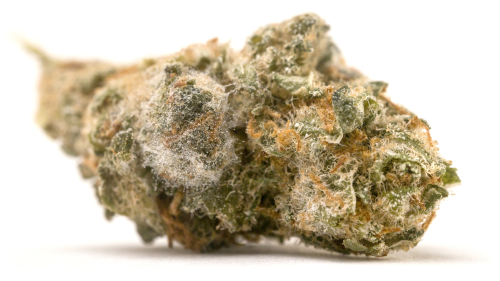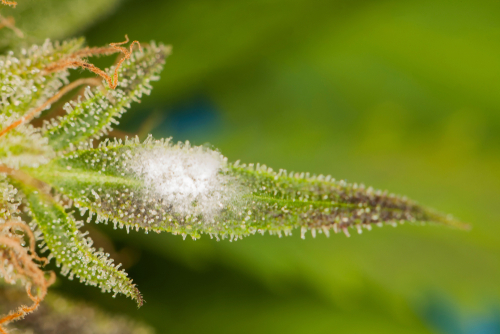Have a question? 06 70 73 89 02
🔞 Not for sale to under 18s
🔥 For a CHILL SUMMER: EVERYTHING is on special 🔥
Have a question? 06 70 73 89 02

As I'm sure you're aware, the CBD world is evolving in somewhat murky waters. After the European Court of Justice approved the sale of CBD, French legislation seems to be struggling to cover all aspects of this fast-moving industry.
As a friend of mine says: CBD is the Wild West!
Taking advantage of the lack of legislation and regulation, many unscrupulous sellers and suppliershave no hesitation in supplying a product of dubious quality.
Poorly stored, badly ripened flowers lose their quality. Worse still, mold develops! This can be a real health hazard. Follow this article to learn more about mold, the dangers it entails and how to avoid it by choosing your CBD flowers correctly.
Molds are micro-organisms involved in the fermentation and decomposition of organic matter. These organisms grow rapidly in humid environments.
Eventually, these microscopic organisms, invisible to the naked eye, grow and add up, forming spots and/or moss of different colors.
The moulds that most often develop on CBD flowers are :
A filamentous fungus. A colony appears as a white fuzz. They're everywhere, all around us. There are usually between 1 and 20 spores per cubic metre of air. So, without realizing it, we inhale an average of between 10 and 30 a day!
The Penicillium family is better known than the others. There are 9 species, not all of which are bad for humans. Among them isPenicillium glaucum, from which penicillin (the famous antibiotic that has saved billions of lives) was developed. Also in this family is the famous Penicillus roqueforti, which forms the dark stains on Roquefort cheese. Or Penicillium camembertii, which forms the white rind of Camembert cheese.
Much less attractive than penicillium and smaller than aspergillus, cladisporium is also a fungus. It grows almost exclusively on plant matter, whether living or dead, and is generally found on fruits such as lemons. Colonies develop as olive-green, brown or black, slightly fuzzy spots.
The latter includes some 300 species. They are known as plant diseases. They primarily attack seeds. Some are parasitic, and some are more dangerous than others. But almost all can cause respiratory allergies in humans.
These molds are the most commonly found in the environment. They travel in the form of spores carried by the wind until they find a surface offering the nutrients and conditions necessary for their development.
The moulds that grow on CBD flowers are all different, but all are a kind of fungus. The conditions favorable to their development are more or less the same for each of them:
For all these reasons, we always recommend storing your cbd flowers in a closed container, away from light and humidity. This will prevent the spores from coming into contact with your flowers and developing!

As you'd expect, the presence of mould on CBD flowers hasa direct impact on their quality, potency and flavour. The growth of microscopic fungi alters the structure of trichomes, where cannabinoids and terpenes are concentrated.
This leads to a significant drop in CBD levels and can alter the profile of other cannabinoids, such as CBG or CBN, thus reducing the desired effects. Mould also causes premature oxidation, which alters the flavours and annihilates certain beneficial properties of terpenes, such as the anti-inflammatory effect of myrcene or the energizing power of limonene. In addition to the chemical impact, the texture of the flowers also changes: they become sticky, spongy or powdery, a sign of advanced decomposition.
As you can see, there are a multitude of forms corresponding to each family of bacteria. And although some are more dangerous than others, we have no problem living with them every second of our lives. However, when all the right conditions are met, they develop and become concentrated, as it were, and this is when they can become dangerous for us. Particularly when inhaled or ingested. Depending on the particular mold species and concentration, they can cause :
What's more, it should be noted that heat, combustion (prohibited in the case of cbd) and vaporization in no way alter the potential health risks associated with consuming flowers corrupted by mold.
Recognizing moldy flowers can be a tricky business. In fact, the only way to do this is by visual inspection of the flowers, as fungus colonies become visible when they reach a certain stage. A light white, black or grey down, or spots of the same color, can be recognized.
But the main problem is recognizing healthy flowers before you buy them. If you buy your CBD online, because it's often better quality and cheaper, it can be difficult to know the quality of the product before you receive it.
The easiest way is to find a quality dealer you can trust. Here are a few tips to help you find one:
Now that you know all about it, all that's left is to put your knowledge into practice by inspecting your flowers, and to shine in society thanks to your knowledge! Feel free to browse our blog for lots of other useful and fun information about CBD!